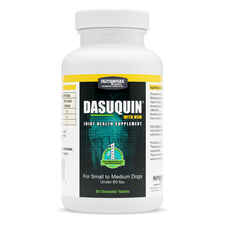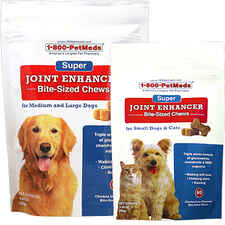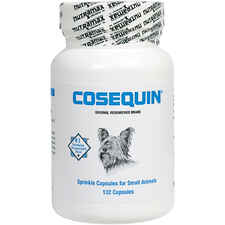Treatment Options for Dogs with Hip Dysplasia
Doctor of Veterinary Medicine

While efforts are made to answer all questions as quickly as possible, if an immediate answer is required or if your pet is in need of urgent or emergency care, contact your pet's veterinarian immediately.
Doctor of Veterinary Medicine

You will receive an answer from Dr. Lindsay and our vet/tech team as soon as possible, usually the same day.
All answers are provided for informational or educational purposes only, and are intended to be a supplement to, and not a substitute for, the expertise and professional judgment of your pet's veterinarian.
It may be necessary to consult your pet's veterinarian regarding the applicability of any opinions or recommendations with respect to your pet's symptoms or medical condition.
CloseDoctor of Veterinary Medicine

An error has occurred, please reload the page and try again.
CloseWhile efforts are made to answer all questions as quickly as possible, if an immediate answer is required or if your pet is in need of urgent or emergency care, contact your pet's veterinarian immediately.
There is no answer related to your question
Hip dysplasia in dogs is extremely painful, and it is heartbreaking for any dog owner to have to witness his or her dog suffering. The condition is so serious that your dog will struggle to do normal activities, and the pain so severe that it can even change your dog's temperament. Most likely, your dog will not want to play or do any kind of exercise. Fortunately, there are several treatment options available to help alleviate your dog's pain. Homeopathic remedies are always recommended before giving pain medication, since pain medication has potentially dangerous side effects. Below are some treatment options for canine hip dysplasia including natural remedies, everyday tips, and surgery.
You can help ease your dog's pain if he or she suffers from hip dysplasia. Since canine hip dysplasia is a form of degenerative arthritis, joint supplements, which help dogs with arthritis, can also help your dog with hip dysplasia. Other options include homeopathic remedies, Omega 3 fatty acids, antioxidants, NSAIDs, and as a last resort, pain medications (steroids).
If your dog has a predisposition to canine hip dysplasia, we recommend supplementing your dog's diet with joint supplements, antioxidants, and Omega 3 fatty acids to help decrease the tendency to develop hip dysplasia, and to help control pain if it develops. Research shows that 75% of dogs with hip dysplasia will lead normal quality lives with the appropriate supplements and wise management.
- Feed your dog pet food formulated for weight control.
- Consider gentle exercises like swimming.
- Decrease your dog's jumping by using pet steps and ramps.
- Allow your dog to warm up slowly before exercising.
- Include frequent exercises for short periods each day. Ten minute increments three times a day is better than 30 minutes a day.
- Provide a soft supportive orthpedic dog bed.
- Elevate your dog's food and water bowls.
- Use a supportive harness when walking your dog.
There are several surgeries, similar to those used in humans, that can be used to repair your dog's hips: TPO, FHO, DARthroplasty, and THR.
- A TPO or triple pelvic osteotomy is best used for pups less than two years old without arthritis. This surgery repositions the acetabular socket so it creates a tighter fit for the head of the femur.
- FHO or femoral head ostectomy is best for little dogs to dogs under 50 pounds. The head of the femur is completely removed and the area fills in this tissue to create a false joint. Because there is no longer any bone contact, there is no longer any arthritic pain.
- DARthroplasty or dorsal acetabular rim arthroplasty creates a deeper socket for the femur to rest in by building up the acetabular rim with bone from other sites.
- THR or total hip replacement is best for dogs that have developed painful arthritis. The acetabulum and the head of the femur are both replaced. This surgery is more complex than the other surgeries and about 10% of dogs have complications.



























